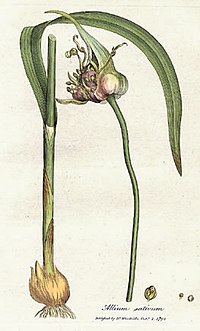
Chemical characterization and biological activity of an endemic Amaryllidaceae species: Galanthus cilicicus
Sign Up to like & getrecommendations! Published in 2017 at "South African Journal of Botany"
DOI: 10.1016/j.sajb.2016.11.008
Abstract: Abstract The phytochemical investigation on Galanthus cilicicus Baker (Amaryllidaceae) led to the isolation of four alkaloids (tazettine 1, galanthamine 2, sanguinine 3, and haemanthamine 4). The alkaloid patterns of bulbs and aerial parts of G.… read more here.
Keywords: aerial parts; characterization biological; chemical characterization; galanthus cilicicus ... See more keywords

Comparative Plastome Analysis of Three Amaryllidaceae Subfamilies: Insights into Variation of Genome Characteristics, Phylogeny, and Adaptive Evolution
Sign Up to like & getrecommendations! Published in 2022 at "BioMed Research International"
DOI: 10.1155/2022/3909596
Abstract: In the latest APG IV classification system, Amaryllidaceae is placed under the order of Asparagus and includes three subfamilies: Agapanthoideae, Allioideae, and Amaryllidoideae, which include many economically important crops. With the development of molecular phylogeny,… read more here.
Keywords: amaryllidaceae; three subfamilies; genome; analysis ... See more keywords

Two new species of Peruvian Amaryllidaceae, an expanded concept of the genus Paramongaia, and taxonomic notes in Stenomesson
Sign Up to like & getrecommendations! Published in 2019 at "Phytotaxa"
DOI: 10.11646/phytotaxa.416.2.6
Abstract: A new species of Paramongaia, P. multiflora, and of Rauhia, R. albescens, are described from Peru. We also present an updated parsimony analysis of aligned ITS sequences across the tetraploid Andean clade of Amaryllidaceae subfam.… read more here.
Keywords: new species; taxonomic notes; expanded concept; genus paramongaia ... See more keywords

Chemical Survey of Three Species of the Genus Rauhia Traub (Amaryllidaceae)
Sign Up to like & getrecommendations! Published in 2022 at "Plants"
DOI: 10.3390/plants11243549
Abstract: Plant biodiversity is an important source of compounds with medicinal properties. The alkaloid galanthamine, first isolated from Galanthus woronowii (Amaryllidaceae), is approved by the FDA for the palliative treatment of mild to moderate Alzheimer’s disease… read more here.
Keywords: survey three; galanthamine type; galanthamine; chemical survey ... See more keywords